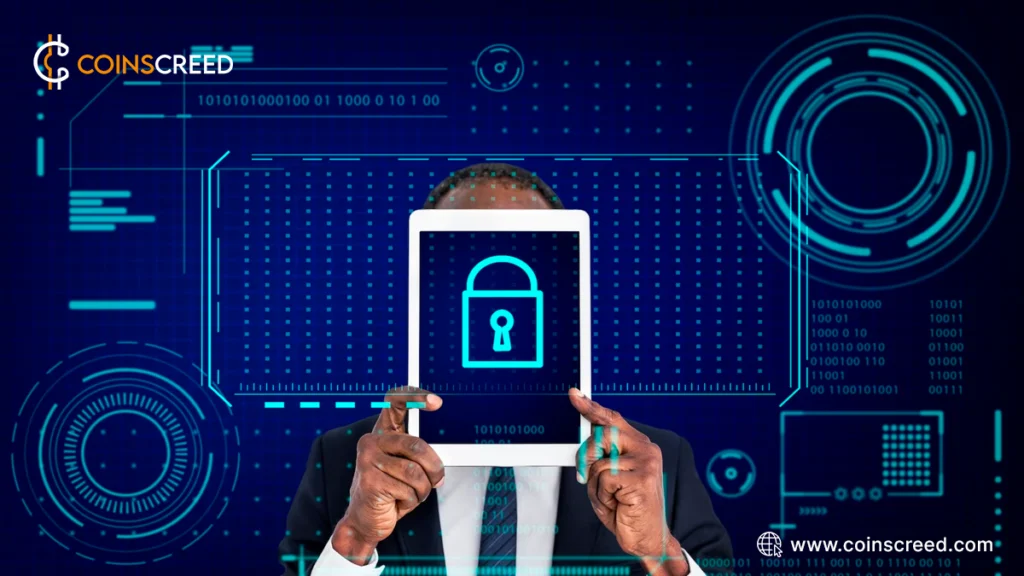The legal framework regarding intellectual property is more complex than ever as technology continues to transform how we produce, distribute, and consume content. Additionally, as the digital landscape grows, digital assets and intellectual property rights present a new frontier.

Digital assets are intangible items you can own, purchase, and sell in an online marketplace. As the value of these digital assets goes up, issues about intellectual property rights have become an urgent concern. This problem poses severe risks to creators and content owners, as it could result in income loss.
In this article, we will look into digital assets, discussing their relevance, effect, and the developing difficulties of intellectual property rights in this field.
What Are Digital Assets?
Digital assets are intangible property that you can access online. Unlike real estate or machinery, both physical assets, digital assets don’t exist in the real world. Instead, they only exist in the form of electronic data.
Digital assets can range from photographs and movies to music, eBooks, virtual real estate, securities, and tokens. Their function in e-commerce, virtual economies, gaming, and decentralized finance (DeFi) is significant in today’s digital age.
Intellectual Property Rights (IPR) in the Digital Realm
Protecting IPR is especially important in the widespread digital production, distribution, and consumption age. Intellectual property law (IPR) is a body of law that protects the originality, integrity, and ownership of creative works. Additionally, these rights are increasingly important in the digital era to safeguard digital assets and promote a thriving ecosystem for innovators and entrepreneurs.
The most popular types of IP protection are:
- Copyright
- Trademarks
- Patents
- Trade Secrets
Copyright
Copyright laws include original works of art, like books, songs, movies, software, and online material. These laws help creators decide who can make copies, show them, perform them, and do anything else with their digital creations. In today’s digital age, copyright holders frequently face issues related to digital piracy and unauthorized distribution.
Trademarks
Trademarks protect the brand names, logos, and other symbols that make products and services stand out. Trademark protection in the digital age must account for domain names, social media handles, and online brand visibility.
Patents
Protecting new technologies and intellectual property is the primary function of patents. In the digital world, patents can cover everything from an algorithm to an entire technological process or even a new piece of hardware. In addition to ensuring that innovators can profit from their creations for a certain period, patents are crucial in fostering technical progress.
Trade Secrets
Trade secrets are exclusive commercial information that gives a company a strategic advantage in the marketplace. Due to data and cyber breaches, preserving trade secrets in the digital age is more complex than ever.
The Role of Intellectual Property Rights in Digital Assets
The protection of intellectual property is vital in the world of digital assets. Since digital assets are intangible and easy to replicate, it is crucial to safeguard their ownership and rights to encourage innovation, investment, and creativity in the digital sphere. Below are some of the roles intellectual property rights (IPR) play:
- Protection of Creativity and Innovation
- Digital Content Ownership
- Protection Against Digital Piracy
- NFTs and Digital Art Ownership
- Blockchain and Provenance Tracking
Protection of Creativity and Innovation
IPRs like copyright, patents, and trademarks help protect creators’ and inventors’ original works and digital innovations from infringement. This layer of protection gives creators of all kinds the confidence to publish and disseminate their work without worrying about being pirated.
Digital Content Ownership
Copyright is essential in preventing the illegal duplication, distribution, and exhibition of digital works such as photographs, videos, musical compositions, electronic books, and computer programs.
Also, when talking digital assets and intellectual property rights, it promotes a sustainable and equitable digital content ecosystem. It does this by guaranteeing that creators retain ownership over their work.
Protection Against Digital Piracy
Digital piracy is a significant problem in the information age, and protecting intellectual property rights is one way to fight back.
The illegal replication and dissemination of intellectual materials is known as piracy, resulting in monetary losses for the content creators and the businesses that rely on them.
NFTs and Digital Art Ownership
Non-Fungible Tokens (NFTs) are cryptographic representations of digital assets, such as works of digital art, that guarantee the originality and ownership of that content. While people can trade fungible cryptocurrencies like Bitcoin for another, non-fungible tokens (NFTs) have unique characteristics and cannot be cloned.
Copyright protection of digital works is where IPR plays a role in the NFT ecosystem. By including copyright information terms in the NFT’s metadata, artists can set firm boundaries on how their work can be displayed, distributed, and sold. This protects the artist’s rights and allows for more direct legal action in the event of copyright infringement or illegal usage.
Blockchain and Provenance Tracking
The combination of blockchain technology with provenance tracking provides a trustworthy and auditable log of rights and transactions on digital assets like digital artwork, music, and other forms of creative expression. If you want to know who had a digital item from the beginning, you need to do what’s called “provenance tracking.”
Blockchain technology makes it possible to trace the history of transactions and changes in ownership so that anyone can independently verify it. IPR relies on this system since it establishes authorship and ownership claims for works of art and other creative works. Additionally, when it comes to digital assets and intellectual property rights, these assets like digital artwork can have clear ownership records, allowing producers to protect their intellectual property.
Challenges for Intellectual Property Rights in the Digital Age
The intersection between digital assets and intellectual property rights presents several challenges nowadays. Some of these challenges include:
- Digital Piracy and Copyright Infringement
- Difficulty in Enforcement
- NFTs and Digital Art Ownership
- Global Differences in IPR Laws
- Open-Source and Creative Commons Licenses
Digital Piracy and Copyright Infringement
This means using, copying, distributing, or sharing digital material that belongs to someone else without their permission. Stealing someone else’s work in the digital age is simple, whether it’s a song, video, book, or software. These issues serves as a problem for the intersection between digital assets and intellectual property rights.
For example, this is similar to when somebody makes copies of your music and gives them away for free or uploads your film to the internet without your permission. It’s the same as if somebody took all your efforts without providing you any recognition or compensation.
Additionally, content creators have their income threatened by digital piracy since consumers can access copyrighted content without paying for it.
Difficulty in Enforcement of Intellectual Property Rights (IPR)
Due to the global and decentralized structure of the internet, protecting digital assets and intellectual property rights online is a complex and challenging task. It can be difficult and time-consuming to track down foreign infringers and bring them to justice.
It is becoming difficult to safeguard and enforce intellectual property rights online due to copyright infringement, and AI-generated content.
Also, different countries have different IPR rules and fears about data privacy, making enforcing the law harder. These issues make it hard for policymakers and content creators to balance IPR security and user privacy rights.
NFTs and Digital Art Ownership
By using NFTs, creators of digital works can bypass intermediaries and sell their work straight to buyers. After receiving proof of ownership, collectors who invest in NFTs can display their assets in online galleries.
Additionally, this digital asset has opened up a new revenue stream for digital creators in the form of royalties from resale. However, many have raised concerns over copyright infringement, and potential legal battles over licensing agreements in digital art in response to the rise in NFTs.
Global Differences in IPR Laws
This refers to the legal frameworks and laws governing intellectual property protection in various countries and jurisdictions worldwide. Copyrights, trademarks, patents, and trade secrets have rules and treaties varying widely in scope, duration, and enforcement procedures from country to country. As a result of these differences, enforcing international intellectual property rights can take time for businesses.
Open-Source and Creative Commons Licenses
Different licensing approaches, such as Open Source and Creative Commons Licenses, grant more flexible usage rights than conventional copyright. Additionally, anyone can access, modify and redistribute the source code for a piece of software under an open-source license.
While this encourages teamwork and fresh ideas, it can make it challenging to regulate how people use the program in the future.
Also, Creative Commons licenses allow authors to specify different conditions under which anyone can use their work. This makes it challenging to monitor and enforce copyrights for online materials. Additionally, keeping the accessibility of these licenses in check with intellectual property rights protection is a significant problem.
Conclusion
Digital assets and intellectual property rights face new difficulties and opportunities due to the rapid development of technology in our lives. Consequently, addressing the legal, ethical, and practical challenges that arise in this new frontier essential for individuals, businesses, and governments is vital.
